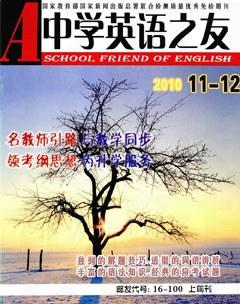七年级(上)Units 9-12词语辨析
1. and, but, or
and和but为并列连词, or为选择连词。and意为“和; 又; 而且”,表示并列、承接或递进关系, and连接两个或两个以上的人或物作主语时, 其谓语动词要用复数形式。but意为“而; 却; 但是”,表示否定或转折关系。or表示“或; 或者; 还是”,or连接的短语作主语时, 其谓语动词的数由最靠近它的那个名词或代词来决定。在否定句中, 并列成分的列举通常用or, 意为“也不”。如:
Li Hua and I are in Grade Seven. 李华和我在七年级。
My sister likes reading books and playing ping-pong. 我姐姐喜欢看书和打乒乓球。
That sweater is nice, but I dont like it. 那件毛衣很漂亮, 但我不喜欢。
Mr Green has two daughters, but he doesnt have a son.
格林先生有两个女儿, 但他没有儿子。
Mike or I am going to your school this afternoon. 迈克或我今天下午要去你们学校。
There is no air or water on the moon. 月球上没有空气和水。
Is this a pen or a pencil? 这是一支钢笔还是铅笔?
2. what time, when
what time与when都可以用来询问时间, 但what time(几点)用来询问比较具体、精确的时间, 答语常常是“几时几分”;而when(什么时候) 所问的时间范围大, 回答时可用点钟, 也可用上午、下午或在哪天、哪月、哪年等。what time还可以用作名词, 作主语或介词宾语。如:
“What time/When does he usually get up?” “He usually gets up at 6:30.”
“他通常什么时候起床?” “他通常六点半起床。”
“What time is it?” “Its ten.” “现在几点?” “现在十点。”
“At what time do you go to school?” “I go to school at seven.”
“你几点钟上学?” “我七点钟上学。”
“When will he come back?” “Hell come back tomorrow.”
“他什么时候回来?” “他将明天回来。”
“When do you play football?” “I play football in the afternoon.”
“你什么时候踢足球?” “我下午踢足球。”
3. maybe, may be
maybe是副词,意思是“也许;可能”。在句中作状语,常用于句首。
may be是情态动词may(可以;可能)加上动词be构成,在句中作谓语,意思是“可能是”。试比较:
He may be at home now. (=Maybe he is at home now.) 他现在可能在家。
Maybe you are right. (=You may be right.) 也许你是对的。
Maybe its in your desk. (=It may be in your desk.) 它可能在你的书桌里。
4. little, a little
little, a little都可用来修饰不可数名词,但意义上差别很大。little表否定含义,接近no。它强调的是“少且几乎没有”;a little表肯定含义,接近some,它强调的是“少但还有一些”。如:
——Does your father know a little English? 你爸爸懂一点英语吗?
——Yes, but he knows little French. 是的,但他对法语几乎不懂。
There is a little food on the table. 桌子上有一点儿食物。
There is little food on the table. 桌子上几乎没有食物。
5. evening, night
evening和night都指“晚上”,但evening表示日落或一天的工作结束之后到上床睡觉之间这段时间;而night指从日落到第二天黎明这段时间。如:
I have an evening party today. 今天我有一个晚会要参加。
The nights are longer in winter. 冬季夜长。
晚上相见时,不论多晚,习惯说:Good evening.(晚上好。);晚上分手时,不论多早,习惯说:Good night.(祝你晚安。)
“今天晚上”是this evening或 tonight;“在晚上”则为in the evening或at night。
6. get, arrive
两者都可以表达“到达”的意思。get是不及物动词,其后须接“介词to+地点名词”,get to“到达某地”常用在口语中。如:
Write to me when you get to London. 到达伦敦时请写信给我。
arrive也是不及物动词,后面接宾语时,常接介词in或 at。表示到达某个国家或大城市时,要用介词in;到达某个村、镇、车站、机场等小地方、小地名时,要用介词at。如:
What time does the train arrive in Shanghai? 这列火车什么时候到达上海?
We can arrive at the village at two oclock. 我们在两点钟能到达那个村子。
get和arrive后面接地点副词here, there, home等时不需要带介词,两者可以互换。如:
We can get/arrive there next week. 我们下周能到达那儿。
7. job, work
job常指某项具体的“工作, 职业”,是可数名词, 有复数形式; work作名词时, 侧重抽象意义上的“工作, 活计”,是不可数名词。work也可以作动词, 意为“工作,干活”。如:
My elder brother found a good job. 我哥哥找到了一份好工作。
“What is his job?” “He is an actor.” “他是干什么工作的?” “他是演员。”
My mother often goes shopping after work. 我母亲下班后常去购物。
I have a lot of work to do today. 我今天有很多工作要做。
8. be strict with, be strict in
strict是形容词, 意思是“严格, 严厉的”,be strict with sb.意思是“对某人要求严格”;be strict in sth. 意思是“对某事要求严格”。如:
Miss Gao is very strict with her students. 高老师对学生们严格要求。
Its good to be strict with children. 对孩子们要求严格是好事。
Our headmaster is strict in everything. 校长对每件事都要求严格。
I am very strict in work. 我对工作要求非常严。
9. also, too
also和too都可表示“也”的意思。一般来说, also比较正式, 它经常放在句中, 其位置在行为动词之前, be动词之后, 如有助动词或情态动词, 一般放在助动词或情态动词之后。too是普通用词, 多用于口语, 常置于句末, 它前面可用逗号, 也可不用逗号, 若置于句中, 其前后均有逗号。如:
He also works in that factory. 他也在那家工厂工作。
I can also tell you a story. 我也能给你讲个故事。
You are also wrong. 你也错了。
She is a teacher too.=She is a teacher, too.=She, too, is a teacher.=She is also a teacher. 她也是个教师。
I want to go there, too. 我也想去那儿。

